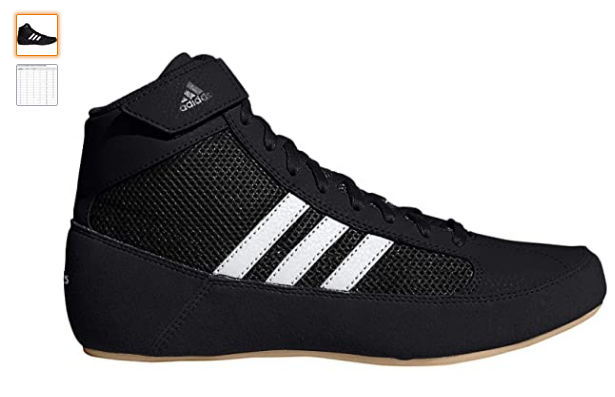Adidas Men’s HVC Wrestling Shoe, Black/White/Iron MetallicLong-distance handling times are dropping – and the first sub-two-hour marathon was completed lately by Kenyan athlete, Eliud Kipchoge. Some are arguing that inventions in coach design are playing a vital part in these advancements. But what’s the wisdom behind these elite handling shoes? Can they really make such a big difference? And can they get indeed better?
Over the last two decades, there has been a growing focus on the engineering of sports outfits, including handling shoes. But while we’re seeing rapid-fire development in this area, these ways are frequently incremental advancements rather than massive strides of change.
The first-ever running shoe appeared about 200 times agone and both accoutrements and design have bettered tremendously since also. But if you consider the changes on a time-to-time basis, the dissonances are fractional. They do, still, add up.
Precluding injury
A running shoe should cover the bottom and the runner from injury. It provides stabilisation of the bottom and protects skin from damage. It should also limit potentially dangerous impact forces as the bottom strikes the ground, while returning energy to the runner.
Handling shoes are designed in a way that improves running effectiveness. Science suggests that if you can reduce the energy it takes to run, also in proposition, you should be suitable to run briskly and for a longer period.
To do this, a number of ways can be espoused. First, we can reduce the mass of a shoe to make it lighter. This will allow a runner to swing their legs more efficiently. Another claim is that if there’s further bumper in the midsole, also an athlete can run with straighter legs, again making them more effective.
Adding stiff plates within the (midsole), may also help an athlete to run better by redistributing positive lower branch common work from the knee to the joint of your toes above the ball of your bottom. These stiff plates may also store and return energy to the runner.
In general, when we compress this midsole, and also release it, we want as important energy as possible to be returned. The further energy that’s returned, the more efficiently an athlete should be suitable to run.
It can, of course, be delicate to design tests that totally explore all these factors, but they’re being explored by wisdom.
Every runner is different
Major sporting brands spend a lot of time and coffers designing and tuning handling shoes, but the biggest challenge they face is the fact that everyone is different.
The design and engineering that goes into a running shoe is relatively heavily dependent on the runner, and their conditions. Each person will have his or her own handling style and, of course, every bottom is unique. There’s noway going to be a one-size-fits-all in shoe design.
A sprinting shoe would also be entirely different to a marathon shoe, for illustration. Marathon footwear needs softening to reduce injury threat from numerous impacts over a long distance; while a sprinting shoe could profit from being stiffer without inescapably taking as important bumper.
Also, some runners strike the ground right on their heel. These “ hinder- bottom strikers” probably need further bumper. Others will strike more on their forefoot. They’re presumably less concerned with bumper, and could profit from a more minimalist running shoe, or indeed running barefoot.
Testing for excellence
Testing falls into two main areas. The first is negotiating testing testing of the design and accoutrements. This involves testing the shoe in insulation.
For illustration, you might want to look at the ageing of a shoe. This might involve putting an artificial bottom in the shoe and compressing it thousands and thousands of times to mimic someone running, and also seeing how the parcels change over time.
But you should also explore the commerce of the shoe with the athlete, probing the effect the footwear has on the runner, their performance and the general physiological state of the existent.

What’s the right shoe for you? Shutterstock
To test this, athletes might be asked to run over force plates while being mugged with a stir prisoner system, to see how the footwear influences their movement and ground response forces. We could also look at the injury pitfalls at this time.
You might also have actors running on rotes and also cover their oxygen situations. In these types of trials you can see how effective they’re at running with different kinds of footwear.
Material gains
Accoutrements are presumably the most pivotal thing in footwear wisdom. Numerous of the rearmost inventions in running shoes are grounded around the accoutrements being used.
The shape of a shoe is more or less fixed to the shape of the bottom. But you might make the midsole thicker and from a softer, more flexible material, furnishing a bigger distance for it to compress over, so it can absorb and return further energy.
You can consider a range of effects when looking at different accoutrements. You might want to consider using lighter accoutrements, accoutrements that return further energy or accoutrements, which allow the shoe to be more fitted to the bottom.
Running shoe midsoles are generally made from molded accoutrements like EVA froth. The bottom of a shoe needs to be resilient and give grip, and frequently fabrics go on top to form the upper.
The future of footwear
I believe the future of running footwear is in sustainability and customization. In future, people could be suitable to design their own shoes to their preference. I also believe shoes will be designed to more suit the requirements of the runner. For illustration, we might cover how someone runs in the lab and also design a brace of shoes specifically for them.
One thing is certain, however. We still don’t completely understand what makes the stylish handling shoe and wisdom is crucial. We still have a long race ahead of us
Buy on Amazon
